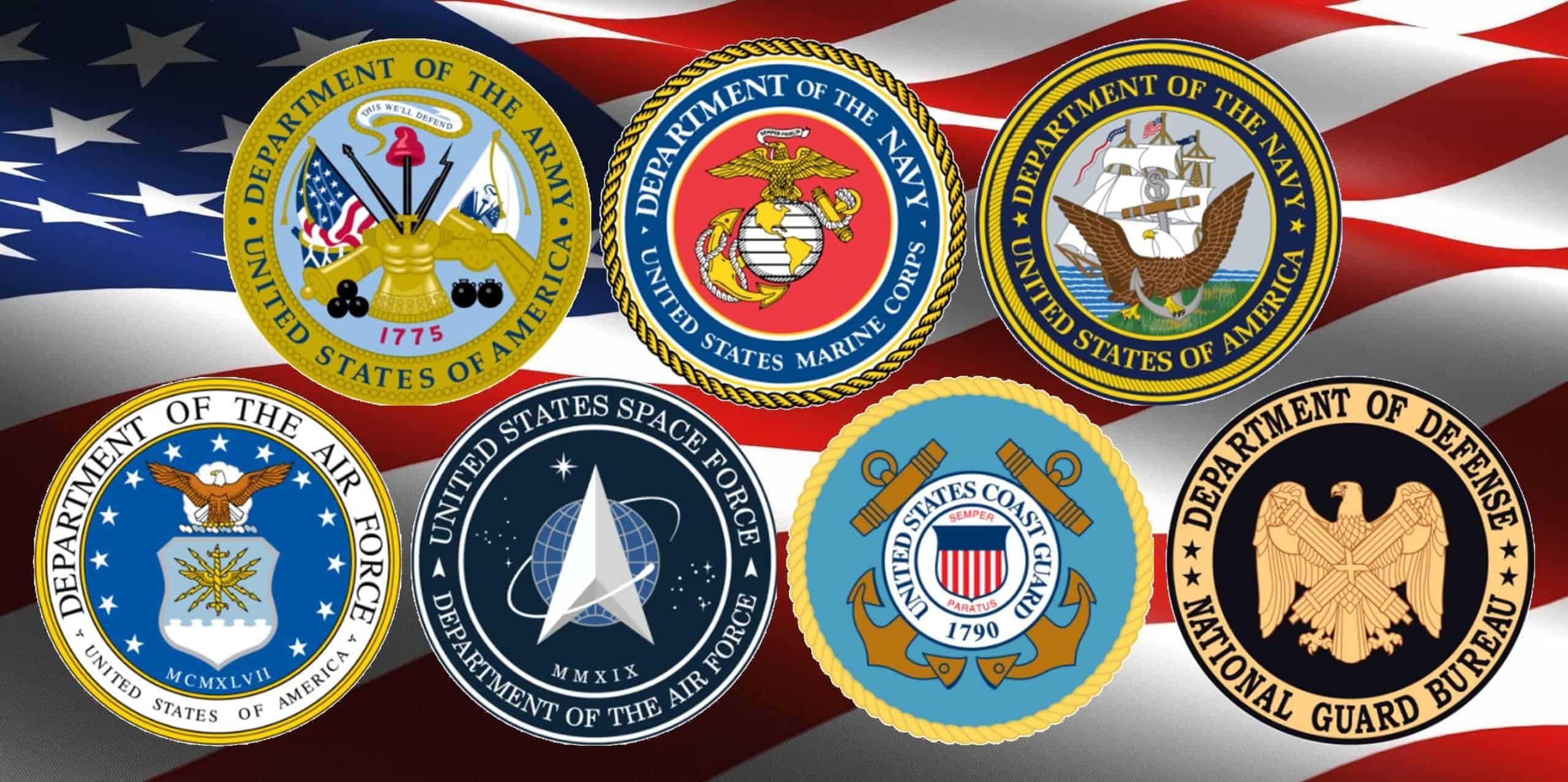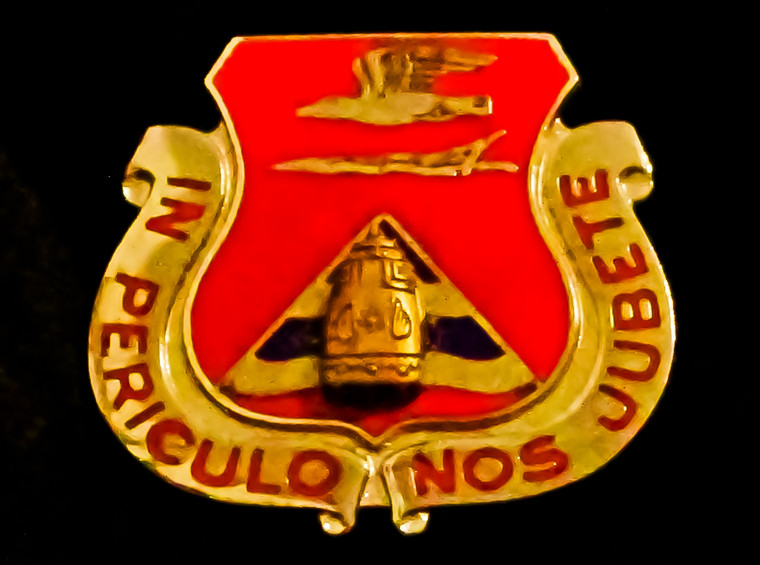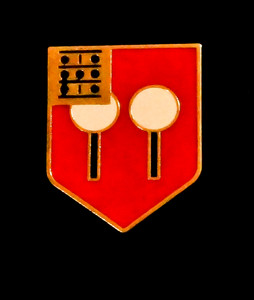
The 31st Field Artillery Regiment Distinctive Unit Insignia was approved on 29 December 1951 and features the unit’s motto IN PERICULO NOS JUBETE, Latin for “When In Danger, Command Us.” Scarlet used throughout most of the shield represents the Field Artillery branch. At the top of the shield are a kittiwake, a bird associated with the North Pacific and the Aleutian Islands, and a dagger called a kris common in Pacific Island Nations; both denote the unit’s service in the Pacific Theater during World War II.
Its amphibious operations are signified by the blue and white wavy lines. Strangely enough, the brown object with hieroglyphic-type markings is described as a bell (“in base a bronze bell of the fourth”) and a howitzer (“The howitzer symbolizes field artillery”) by the same source in the space of just three paragraphs (Field Artillery Part 2, Army Lineage Series, compiled by Janice E. Mckenny, Center of Military History Pub 60–11–1).
Its amphibious operations are signified by the blue and white wavy lines. Strangely enough, the brown object with hieroglyphic-type markings is described as a bell (“in base a bronze bell of the fourth”) and a howitzer (“The howitzer symbolizes field artillery”) by the same source in the space of just three paragraphs (Field Artillery Part 2, Army Lineage Series, compiled by Janice E. Mckenny, Center of Military History Pub 60–11–1).
The 31st Field Artillery Regiment was originally constituted as the 31st Field Artillery in the National Army on 5 July 1918 and assigned to the 11th Division. It saw no action in World War I and was demobilized in December 191. Reconstituted in July 1929, it was assigned to the 2nd Division until 1 January 1930; it was then assigned to the 7th Division in July 1940 and redesignated as the 31st Field Artillery Battalion on 1 October 1940. While designated a battalion, it took part in four Pacific Theater campaigns (Aleutian Islands, Eastern Mandates, Leyte, and Ryukyus) and was awarded a Philippine Presidential Unit Citation.
Still designated a battalion during the Korean War, the unit participated in all ten of that conflict’s campaigns, with its exceptional service being recognized with three Republic of Korea Presidential Unit Citations. In 1957, it was reorganized and redesignated as the 31st Artillery in the Combat Arms Regimental System (CARS) and was redesignated the 31st Field Artillery in September 1971.
It was withdrawn from CARS in March 1989, reorganized under the U.S. Army Regimental System, and transferred to U.S. Army Training and Doctrine Command. It was redesignated the 31st Field Artillery Regiment in October 2005. Today, its only active battalion, the 1st, is assigned to the 434th Field Artillery Brigade at the United States Army Fires Center of Excellence at Fort Sill, Oklahoma.
Still designated a battalion during the Korean War, the unit participated in all ten of that conflict’s campaigns, with its exceptional service being recognized with three Republic of Korea Presidential Unit Citations. In 1957, it was reorganized and redesignated as the 31st Artillery in the Combat Arms Regimental System (CARS) and was redesignated the 31st Field Artillery in September 1971.
It was withdrawn from CARS in March 1989, reorganized under the U.S. Army Regimental System, and transferred to U.S. Army Training and Doctrine Command. It was redesignated the 31st Field Artillery Regiment in October 2005. Today, its only active battalion, the 1st, is assigned to the 434th Field Artillery Brigade at the United States Army Fires Center of Excellence at Fort Sill, Oklahoma.
The DUI is the picture is the one you will receive.






